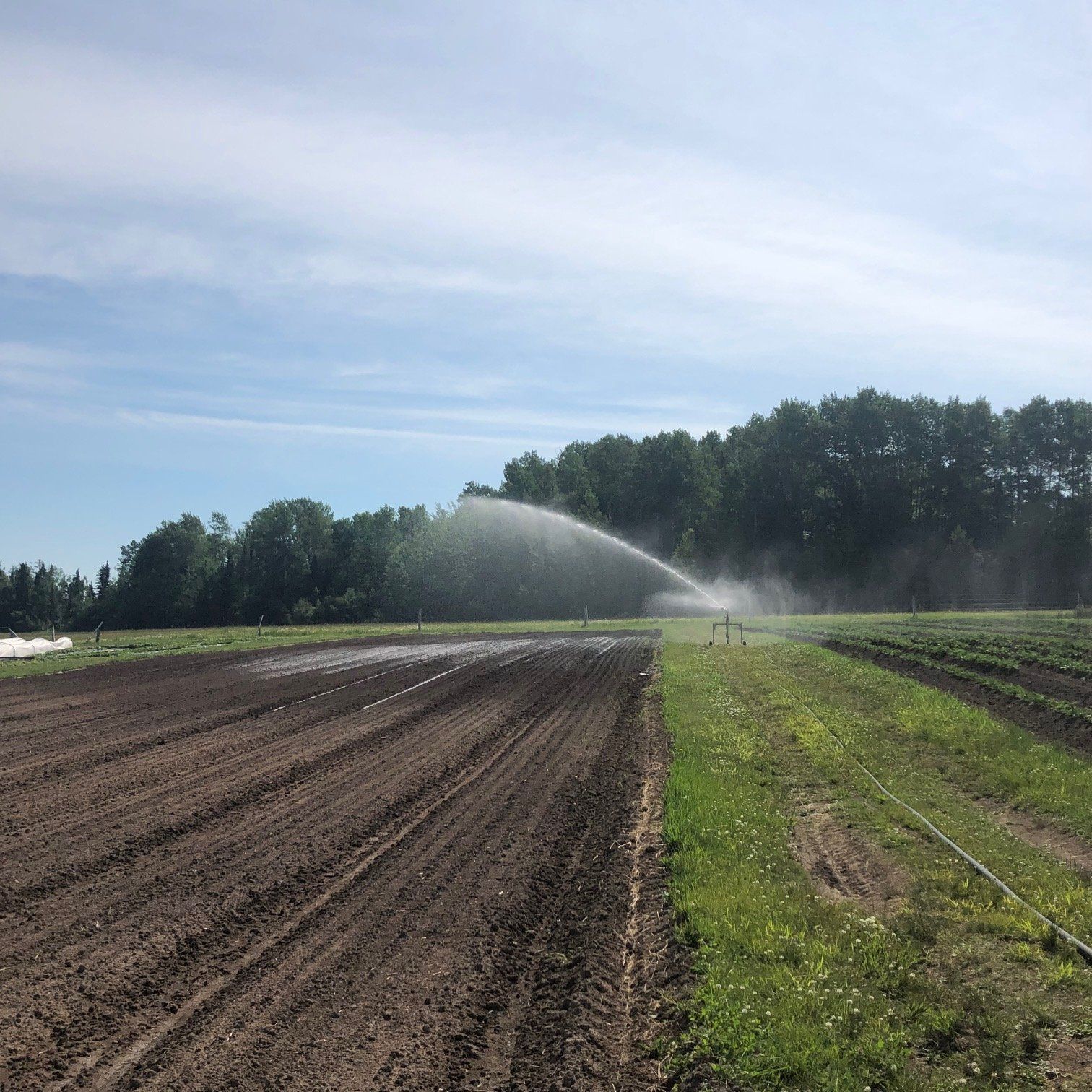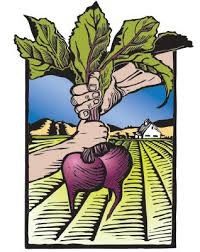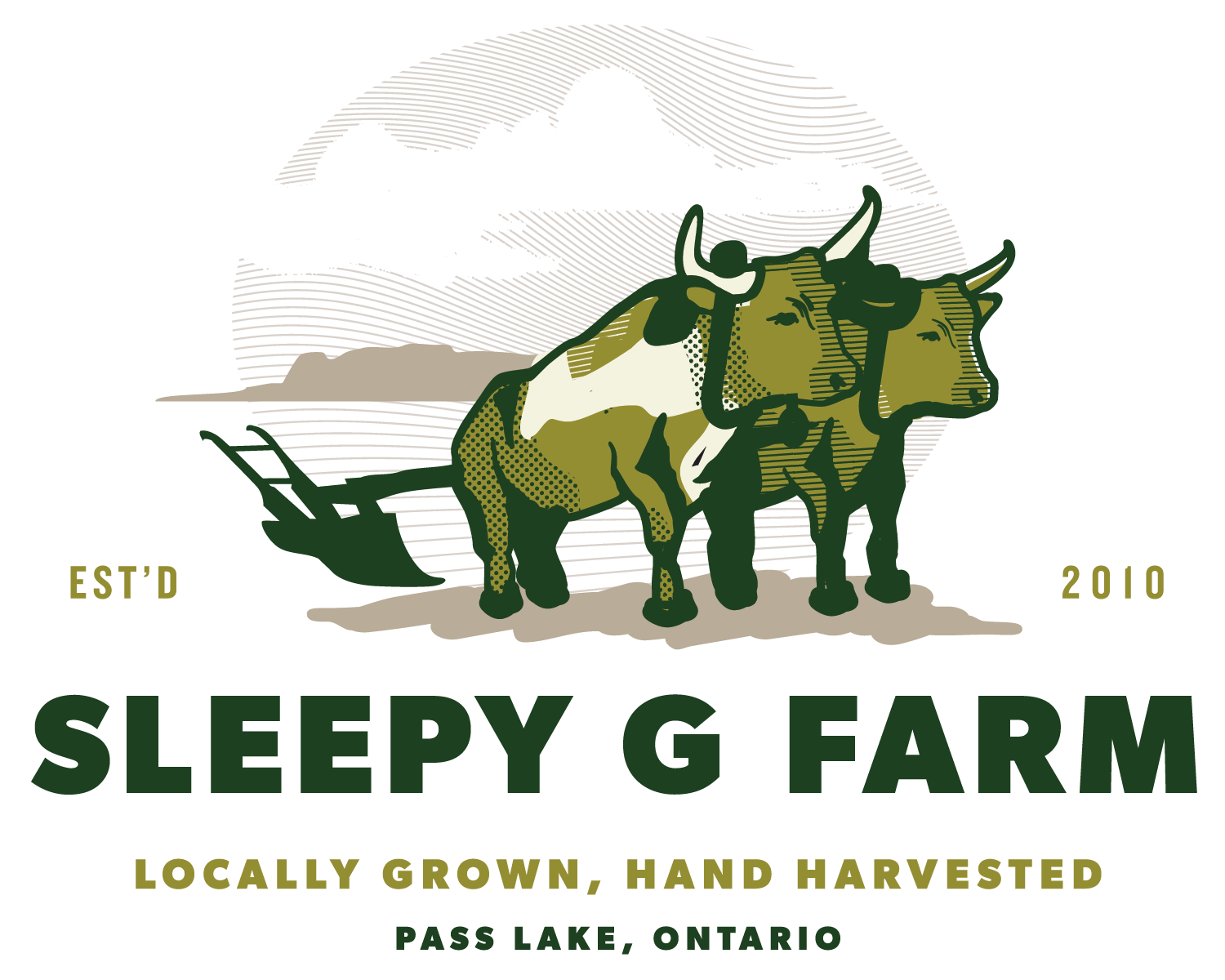The premise behind Community Shared Agriculture (CSA) is that consumers pay a farmer in advance for food they hope to receive as the growing season progresses. The farmer in turn is assured their overhead costs are covered, thereby freeing them to focus efforts on growing food rather than marketing it.
We did not invent the CSA model. In fact, the concept was first introduced in North America in the 1980s. In the beginning it must have been very difficult for farmers to find supporters because it was not typical to have this kind of relationship with a farmer. Secondly, the local food movement wasn’t what it is today – in fact, the years spanning the 1960s-1990s were among the worst years ever to be a farmer. As a new age of consumerism took hold of us in North America our interests (and household budgets) shifted away from eating wholesome food in favour of a myriad of other new priorities such as processed foods, recreational activities, and gadgets for the home. This was also the time period when industry and government alike advised farmers to “get big or get out!”. The subsequent thrust in this direction reduced small and diversified family farms to a quaint relic of food production of a bygone era. This particular time period nearly killed the small farmer.
Thankfully, during those decades not everyone lost interest in eating wholesome food. Conscious consumers sought out farmers they could trust, and farmers forged new relationships with eaters through the CSA model. The newfound relationship between farmer and eater saved the institution of the small farm from extinction.
Our introduction to CSA farming came while working for our mentors Rob and Cathie at Mackin Creek Farm near Williams Lake, British Columbia. Rob and Cathie were very much products of the social movement of the 1960’s and 1970’s. As they emerged from that time period rather than move to the city and get a job, they instead bought land and started a farm. In the 1980s Mackin Creek Farm, in partnership with Dragon Mountain Farm, established one of the first CSAs in the province of BC. These are the pioneers to which the next generation of farmers owes a debt of gratitude, for our very relevance as small farms today was preserved in large part by the first CSA farms then.
By about 2000 nearly every major urban center across Canada and the United States was being serviced by CSA farms. And though competition in recent years has begun to saturate certain markets, CSAs continue to grow in numbers each year. When we bought our farm in Pass Lake in 2005 it was with the distinct intention to start a CSA farm. Today Sleepy G Farm is both the largest and longest running CSA in Northwestern Ontario. In 2010 we started with 20 members and have grown steadily to over 225 members.
What attracts us most to the CSA model is the community aspect. We have reached a point in our careers where we are not satisfied with selling to random customers within the context of a free enterprise economy. We instead are more interested in building community with families that share our dream of building a sustainable local food system, and with individuals who seek out organic food either for their own health benefit or for the benefit of the Earth itself. Over the 9 years that we have been running the CSA we have gotten to know our members a little bit at a time each week when we see them at the CSA pickup. We feel grateful to have so many wonderful people in our lives.
About a year ago we started to look for ways that we could place a greater emphasis on community within our farm business. After hosting a general meeting with our CSA members in November 2017 we came away with some new ideas on how we could better serve our CSA community while addressing our own needs. The subsequent changes to the CSA program has given a lot more flexibility to our weekly offerings, which was a request that came directly from our members. Also, by creating the “Experience Share” option we are now able to offer members the opportunity to experience the farm work first-hand in exchange for a discount on their share. This has proven to be a very rewarding addition to our CSA program. Throughout the growing season we have taken Experience Share members on Sundays and Thursdays. These days have not only given us a chance to tackle larger jobs on the farm, but have proven to be a great way to get to know our members on more of a personal level. I can honestly say that because our experience members are only here for 1 day they are able to give their best effort and we have consistently found that their work contribution in exchange for the discount on the CSA is very equitable. It is truly a win-win situation.
Finally, it was important for us to find a way to support CSA members whose financial situation would otherwise prohibit them from being part of this community. The creation of a “subsidy fund” allowed members to voluntarily donate $50 at the time of registration. These funds would then be used to subsidize memberships for those who self-identified the need. Which allows us to give several members their CSA share for half price. This experience has really reaffirmed to us that emphasizing the “Community” in CSA is the right thing to do!



